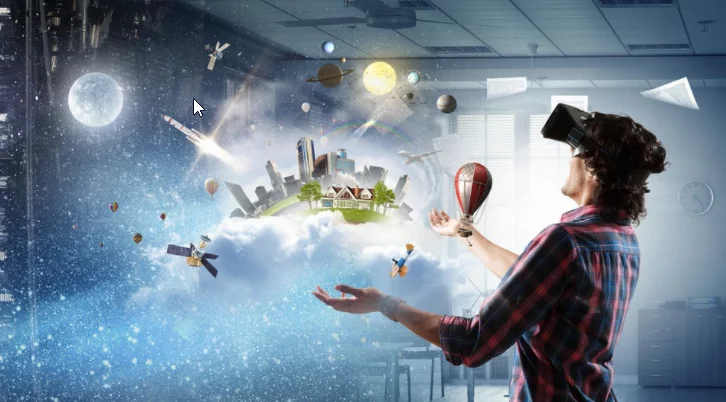Introduction
Since 2020, COVID-19 has affected all aspects of humans’ life cycles, including how we work, play, learn, exercise, and socialize. Virtual reality (VR) technology has the potential to overcome most of these challenges, which has resulted in its increased adoption.
Virtual Reality is the use of computer technology that creates a computer-generated environment, and it could be more effective by overcoming the VR challenges through virtual reality testing. It is not like the conventional user interface or simply viewing a screen; VR places the user inside an experience. The users are engaged and can easily interact with 3D creations, furthermore, they can even hear, touch and smell by using VR.
Learn more about our QA Services
QA Innovation through VR:
Alongside the development of technology comes the unavoidable difficulties, and with vivid technology, the complexities lie in both. the hardware and the software. Considering the immersive nature of virtual reality quality assurance testing poses many challenges. The unreliable compatibility for automation is the major challenge that immersive technologies face in virtual reality testing. However, several QA companies are working to implement automation in virtual reality testing, as the manual testing process can also be physically draining. A skilled QA team should be able to stand up to the physical and mental testing pressures that VR presents.
Statistics:
Let us go through some statistics before talking about testing technology. The industry’s velocity of expansion is incredible. According to the Statistics research experts, the global VR market volume expanded to $4.8 Billion in 2021, could grow to $12 Billion by the end of 2024. Currently, the market figures look like this:
- VR Market Size: $4.8B
- VR Gaming Market Size: $1.4B
- VR Headset Unit Sales: $6M
VR testing challenges:
The main challenges for virtual reality testing companies are segmented into two parts: hardware and software. Currently, the VR devices are designed in such a way that the bulky wraparound display (HMD) creates the best experience possible with exterior light. Moreover, there are some leading US Brands including Oculus, Sony, HTC, and Valve, who are constantly working to improve the hardware profile by making the devices smarter and more comfortable. They are hoping that they can attract the audience by making the design more practical and can expand the use of VR across more industries.
On the other hand, the major focus is on software integration in virtual reality testing. Virtual reality testing aims to provide the best VR experience by evaluating the functionality, consistency, and compatibility of the item. Performance testing on the product, as it translates from device to peripherals and application, is vital. Also, usability testing ensures the set-up, installation and optimization of the hardware and software for the most productive and vigorous VR experience conceivable.
Although, most QA testing is performed to focus on the user’s perspective. In Virtual Reality testing, the tester is involved both physically and mentally within the system, which adds a new degree of user requirements. It can occasionally result in motion sickness, seizures, eye strain, and headaches, and the most critical part of the testing process is what could go wrong physically. Consequently, understanding the mental and physical user expectations are crucial in successful virtual reality testing.
Explore Our Software Testing Services
Conclusion:
At AlphaBOLD, we consider virtual reality testing like the other QA projects with a clear scope of the work, a strong perspective of the technology, and innovative expertise driving the strategy. Our experienced QA professionals understand the VR platforms to verify both client goals and user requirements. We can combine manual and automated testing to ensure a precise and effective process and timeline.


